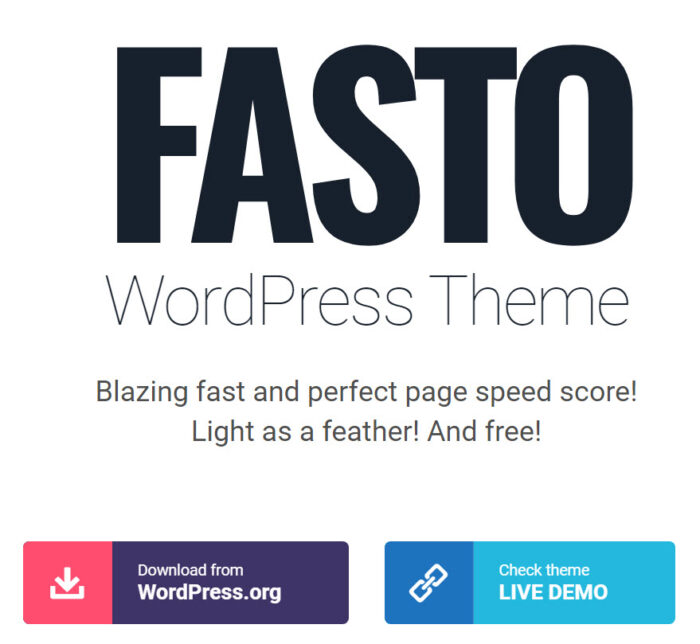Recently for an affiliate campaign, I was asked to give my websites “score” using GTMetrix, and I was embarrassed to report an “E” – my other sites are mostly D’s and C’s – which obviously sucks, and it’s hurting my traffic (I paid a guy on Fiverr to fix it, so it’s an “A” now but the featured images are broken.)
I’ve also been playing with image optimizing WP plugins to try and keep things smooth and fast – my siteground hosting is also maxed out of space but I figured out it was a backup plugin that was basically saving 2x of everything and filling up the space.
Most WordPress websites are already responsive, but keeping things light and fast is tricky when you have a big, bloated old website. Here’s an article on some important stuff you should keep in mind while building (or things you can do to improve later.)
In this mobile age, having a website that performs well on smartphones and tablets isn’t just nice—it’s necessary. That’s where mobile responsiveness comes in.
Understanding Responsive Design
Responsive design means your site automatically adjusts to fit the device it’s being viewed on, whether that’s a desktop, tablet, or smartphone. Not only does this provide a better user experience, but Google also ranks mobile-responsive websites higher in search results.
Making Your WordPress Site Mobile Responsive
Here’s how you can ensure your WordPress site is mobile responsive:
- Choose a Responsive Theme: Most modern WordPress themes are responsive. When selecting a theme, check its description or test it to ensure it’s mobile-friendly.
- Use Responsive Plugins: Some plugins can affect your site’s mobile responsiveness, so make sure any plugin you use is compatible with mobile devices.
Testing Mobile Responsiveness
Once your site is set up, use these tools to test its mobile responsiveness:
- Google Mobile-Friendly Test: This tool from Google tells you whether your site is mobile-friendly and offers suggestions for improvement.
- Responsive Design Checker: This tool lets you see how your site looks on various devices and screen sizes.
- BrowserStack: BrowserStack lets you test your site on real devices, ensuring it works properly on all platforms and browsers.
FAQ
Q: My theme isn’t mobile responsive. What can I do? A: If you’re attached to your current theme, you can hire a developer to make it responsive. However, it might be simpler and more cost-effective to switch to a responsive theme.
Q: Is mobile responsiveness really that important? A: Absolutely! More than half of global internet traffic comes from mobile devices, so if your site isn’t mobile-friendly, you’re missing out on a massive audience.
Mobile responsiveness isn’t just a nice-to-have feature for your WordPress site—it’s a must. By ensuring your site is mobile-friendly, you’ll provide a better user experience, boost your search rankings, and reach a larger audience. So go ahead and make your WordPress site mobile-responsive—you won’t regret it!
Maximize Your Impact: Optimizing Your WordPress Site for Performance
Website performance is more than just a technical issue—it directly affects your site’s user experience and your visibility in search engine results. But how can you optimize your WordPress site for performance?
Understanding Performance Issues
Performance issues like slow loading speeds can frustrate users and increase bounce rates. They can also hurt your site’s SEO, as search engines prioritize fast, efficient sites.
Boost Your Site Speed: The Fastest Responsive WordPress Themes
In the digital landscape, site speed matters. A faster website not only improves user experience but also enhances your SEO. For WordPress users, selecting a fast, responsive theme is crucial. Here are some of the top options:
GeneratePress
GeneratePress is known for its speed and simplicity. It’s a lightweight, responsive WordPress theme that’s built with performance in mind. With a focus on clean code and minimal design, GeneratePress ensures that your website runs smoothly.
Astra
Astra is another lightweight and fast WordPress theme, offering a variety of pre-designed templates. It’s optimized for speed, with a focus on performance. Astra is fully customizable and pairs well with page builders, offering a great base for any kind of website.
Schema Lite
Schema Lite is a fast, SEO-friendly WordPress theme. It’s highly responsive, ensuring your website looks great on any device. Schema Lite is also coded with SEO best practices in mind, helping your website rank higher on search engine results.
Neve
Neve is a multipurpose WordPress theme designed for speed and ease of use. It’s a lightweight theme that offers a range of customizable design options, making it suitable for various types of websites. Neve is also fully responsive and compatible with popular page builders.
OceanWP
OceanWP is a fast-loading WordPress theme that doesn’t compromise on features. It’s a highly extendable theme, offering deep customization options. OceanWP is responsive and multi-purpose, fitting a wide range of use cases.
Fasto – Blazing fast and perfect page speed score! Light as a feather! And free!
Selecting a fast, responsive WordPress theme is crucial in building a successful website. The themes above combine speed, design, and flexibility, providing an excellent starting point for any web project. By choosing a theme that prioritizes performance, you’ll ensure a better experience for your users and improved visibility on search engines.
Optimizing Your WordPress Site for Performance
Here are some steps you can take to boost your site’s performance:
- Choose a Good Hosting Provider: Your hosting provider plays a significant role in your site’s performance. Choose a provider known for its speed and reliability.
- Use a Performance-Optimized Theme: Some themes are coded more efficiently than others. A lightweight, well-coded theme can significantly improve your site’s speed.
- Optimize Images: Large image files can slow down your site. Use an image optimization plugin to automatically compress your images and maintain fast load times.
- Minimize Plugins: Each plugin adds some load to your site. Keep your plugins to a minimum, and make sure each one you use is well-coded and updated regularly.
- Use a Caching Plugin: Caching can dramatically speed up your site by storing a static version of your pages and serving that to users.
- Utilize a CDN: A Content Delivery Network (CDN) can reduce load times by storing copies of your site on servers around the world and serving the site to users from the nearest server.
Top Performance Optimization Plugins
Here are some top-rated performance optimization plugins:
- WP Rocket: This premium plugin offers a range of performance-enhancing features, including caching, lazy loading of images, and more.
- Autoptimize: This plugin optimizes your site’s HTML, CSS, and JavaScript code, improving load times.
- WP Super Cache: This popular caching plugin can dramatically improve your site’s speed.
FAQ
Q: Does more traffic slow down my site? A: High traffic can slow down your site if your hosting provider can’t handle the load. Make sure your hosting plan is suitable for your traffic levels.
Q: Does my site’s location affect its speed? A: Yes, physical distance between your site’s server and your users can affect load times. That’s where a CDN can help.
Optimizing your WordPress site for performance is critical for providing a good user experience and ranking well in search results. With the right techniques and tools, you can ensure your site is as fast and efficient as possible.
Optimizing Your Online Presence: The Top Image Minifiers to Boost Your Site’s Performance
Visual content is a vital part of any website. However, the high-resolution images that make your site visually appealing can also slow it down, negatively impacting the user experience and your SEO. Enter the solution: image minifiers. These are tools designed to reduce your image file sizes without sacrificing quality. Let’s explore some of the best image minifiers available.
EWWW Image Optimizer
EWWW Image Optimizer is a popular choice due to its robust functionality. This WordPress plugin allows you to optimize your images automatically as you upload them to your site. It also offers the option to optimize existing images. The best part? There’s no limit on file sizes. Its cloud optimization feature comes with a cost, but you can utilize the free version if you’re okay with doing the optimization on your server.
Smush
Smush is another excellent image minifier tool that has earned a loyal following. This WordPress plugin not only compresses your images but also offers features like lazy loading, bulk optimization, and detection of images slowing down your site. Smush has a free version, but if you’re after superior compression rates, you might want to consider the premium version, Smush Pro.
TinyPNG
TinyPNG is a user-friendly, web-based tool that excels at compressing PNG and JPEG images. It stands out with its drop-and-drag interface, making the process of image optimization simple. TinyPNG allows you to compress up to 20 images of 5MB each in a single go. If you need more, there’s a Photoshop plugin available for a one-time fee.
This one is basically the best I think… but it costs more to do them all in bulk and I’ve been flipping between this and smush or ewww.
Kraken.io
Kraken.io offers both a web interface and a WordPress plugin for image optimization. It provides three modes of optimization – Lossy, Lossless, and Expert, where you can adjust the quality and metadata removal settings. With the free account, you can optimize images up to 1MB in size. The Pro version offers additional features like unlimited image size and the ability to preserve certain metadata.
ImageOptim
If you’re a Mac user, ImageOptim could be your best bet. This open-source software optimizes images without compromising their quality. You can simply drop and drag your images into the application for compression. For web optimization, ImageOptim removes EXIF metadata and color profiles, making the images web-ready.
ShortPixel
ShortPixel is a WordPress plugin that offers both lossy and lossless image compression. It also optimizes PDF documents. ShortPixel is easy to use and offers a free monthly allowance of 100 images. If you need more, their affordable plans cater to different user needs.
Image optimization plays a crucial role in improving your site’s load speed, enhancing user experience, and boosting your SEO rankings. Whether you prefer a WordPress plugin or a web-based tool, there’s an image minifier out there to suit your needs. By choosing the right tool and optimizing your images, you can keep your website visually appealing and fast-loading – a win-win for you and your visitors.






No Comments